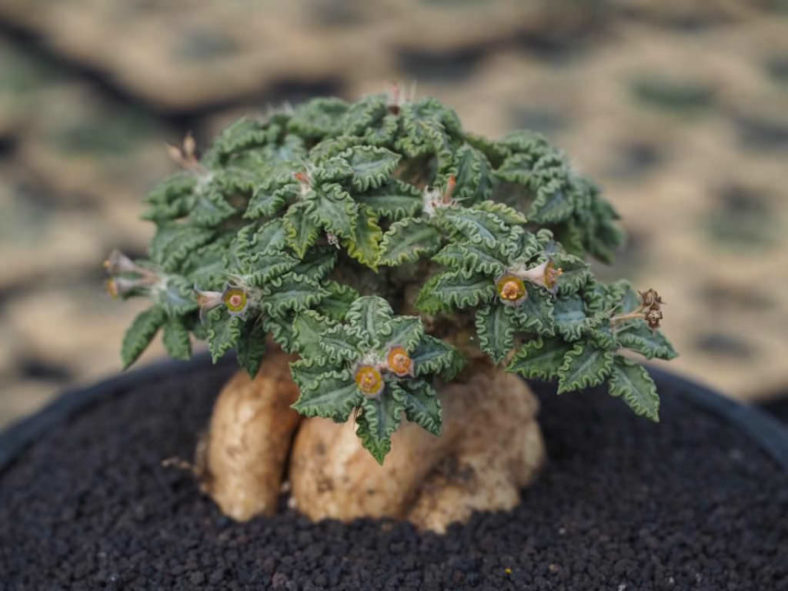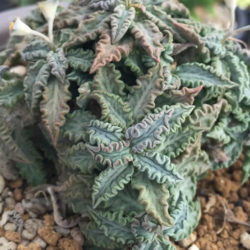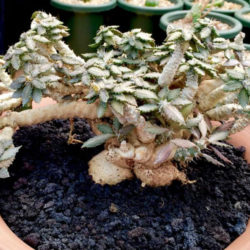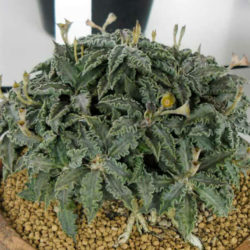Scientific Name
Euphorbia tulearensis (Rauh) Rauh
Synonym(s)
Euphorbia cap-saintemariensis var. tulearensis
Scientific Classification
Family: Euphorbiaceae
Subfamily: Euphorbioideae
Tribe: Euphorbieae
Subtribe: Euphorbiinae
Genus: Euphorbia
Description
Euphorbia tulearensis is a charming small succulent that develops a wooden tuberous caudex with a crown of thick and short or elongated branches bearing evergreen or semi-deciduous leaves, usually arranged in rosettes at the branch tips. It grows up to 8 inches (20 cm) tall. The leaves are fleshy, narrow, crinkled, highly undulated, with raised veins. They are green but take on a nice coppery-bronze coloring under stress.
Flowers are greenish-yellow, bell-shaped, and appear in short-stemmed clusters with beige, soft tan, or pinkish petal-like cyathophylls, usually in mid-summer.
Origin
Euphorbia tulearensis is native to southwest Madagascar. It grows on rocky limestone slopes and cliffs.
Etymology
The specific epithet "tulearensis (too-lee-ah-REN-sis)" refers to Toliara, formerly known as Tuléar, a city in Madagascar where the species was first discovered.

Hardiness
USDA hardiness zone 9b to 11b: from 25 °F (−3.9 °C) to 50 °F (+10 °C).
How to Grow and Care
Euphorbias are very easy to care for. They require a little pampering to become established, but once they are, they are self-sufficient. More die from too much care and watering than from neglect. Euphorbias need well-draining soil and lots of sunlight. They are not particular about soil pH but cannot tolerate wet soil. Unlike most succulents, Euphorbia does not handle long periods of drought well. It may need weekly watering during the summer. Water whenever the soil is dry several inches below the surface. Water deeply, but don't let them sit in wet soil, which can cause root rot. Add some organic matter or fertilizer to the planting hole. Feed with a half-strength fertilizer monthly if you are growing them in containers or your soil is poor.
Euphorbia can be grown from seed, but they can be difficult to germinate (or even find). It is usually propagated by cuttings. This can be tricky because of the exuding sap. Rooting hormone is recommended with Euphorbias. They tend to grow problem-free, but there are a few pests and diseases to be alert for.
See more at How to Grow and Care for Euphorbia.
Links
- Back to genus Euphorbia
- Succupedia: Browse succulents by Scientific Name, Common Name, Genus, Family, USDA Hardiness Zone, Origin, or cacti by Genus
Photo Gallery
Click on a photo to see a larger version.


